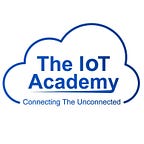Navigating the Difference Between IoT and Cloud Computing
Introduction
In tech talk, there are two buzzwords: IoT (Internet of Things) and cloud computing. They’re often mentioned together, but they do different things. This guide breaks down the difference between IoT and cloud computing, explains what makes each special, and helps you decide when to use one or the other.
IoT vs Cloud Computing: Understanding the Basics
Let’s start by getting a basic understanding of IoT and cloud computing before we compare them.
- Internet of Things (IoT)
IoT means connecting devices like phones, cars, and buildings with sensors and software. They share data without people directly involved, aiming to improve efficiency and provide insights through data analysis.
- Cloud Computing
Cloud computing lets people use computer resources like servers and software over the internet. You don’t need to own the physical stuff; you can rent it. This makes it flexible and cost-effective.
Internet Of Things Vs Cloud Computing: A Comparative Analysis
Now that we know what IoT and cloud computing are, let’s look at the main ways they are different from each other.
Data Generation vs. Data Processing
- IoT: IoT devices are all about collecting data from the real world using sensors. They send this data to central systems or the cloud for analysis. Examples include fitness trackers and industrial sensors.
- Cloud Computing: Cloud computing has a specialty of processing and storing data. It gives the power and space to handle large amounts of data from IoT devices. Services like AWS and Google Cloud provide tools for processing and analyzing this data.
- Data Location
- IoT: The data from IoT devices is usually at the edge, near the devices. This setup allows for quick processing, important for applications needing immediate responses.
- Cloud Computing: Cloud computing stores and processes data in distant centers, offering scalability but introducing potential delays for applications needing instant responses due to the data’s remote location.
2. Device Intelligence:
- IoT: IoT devices, having limited processing power, rely on the cloud for intelligence, utilizing its more robust computing resources to handle complex tasks efficiently.
- Cloud Computing: Cloud computing services provide powerful computational abilities and advanced analytics, enabling the processing of complex data and the application of AI/ML models to IoT data.
3. Scalability:
- IoT: IoT systems can easily scale by adding more devices, but the scalability of data processing and analytics relies on the supporting cloud computing resources.
- Cloud Computing: Cloud computing is highly scalable. Users can easily adjust their resource allocation to meet changing demands, making it suitable for accommodating IoT data growth.
IoT vs. Cloud Computing: Which is Better?
The decision between IoT and cloud computing depends on the needs of a project. Here are situations where one may be preferred over the other:
When to Choose IoT
- Real-time Processing: Choose IoT when quick processing of device-generated data is crucial. Edge computing, processing data locally on devices, reduces response time.
- Limited Network Connectivity: Opt for IoT when network reliability or cost is a concern. Devices can work independently, sending crucial data to the cloud when connected.
- Resource Constraints: Choose cloud computing when IoT devices lack processing power. Offloading data processing to the cloud allows for more advanced analysis with robust resources.
When to Choose Cloud Computing
- Scalability: If your application deals with changing data volumes or needs a lot of computing power, cloud computing provides scalable resources when you need them.
- Advanced Analytics: If your project requires complex data analysis, machine learning, or predictive modeling, cloud computing offers the tools and resources needed for these tasks.
- Centralized Management: When you want to control and manage data and applications across many devices and places, cloud computing, with its centralized approach, is beneficial.
Conclusion:
In conclusion, IoT collects data from devices, and cloud computing processes it. The choice depends on needs: IoT for quick responses, network concerns, or device constraints, and cloud computing for scalability, advanced analysis, and centralized control. Using both brings innovation in the digital era.
